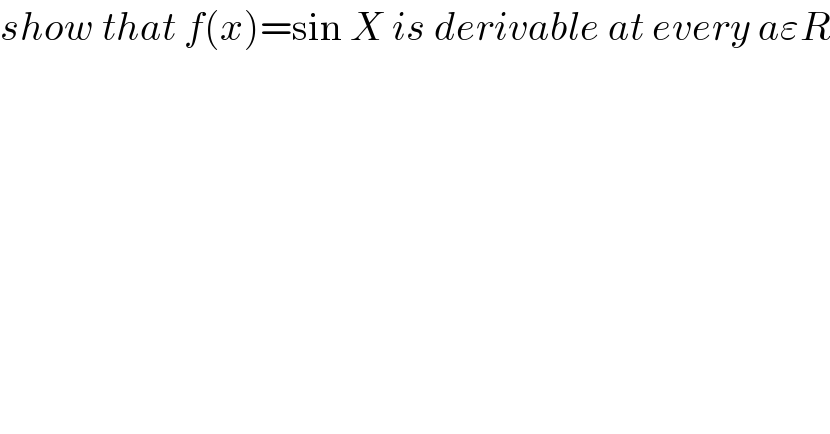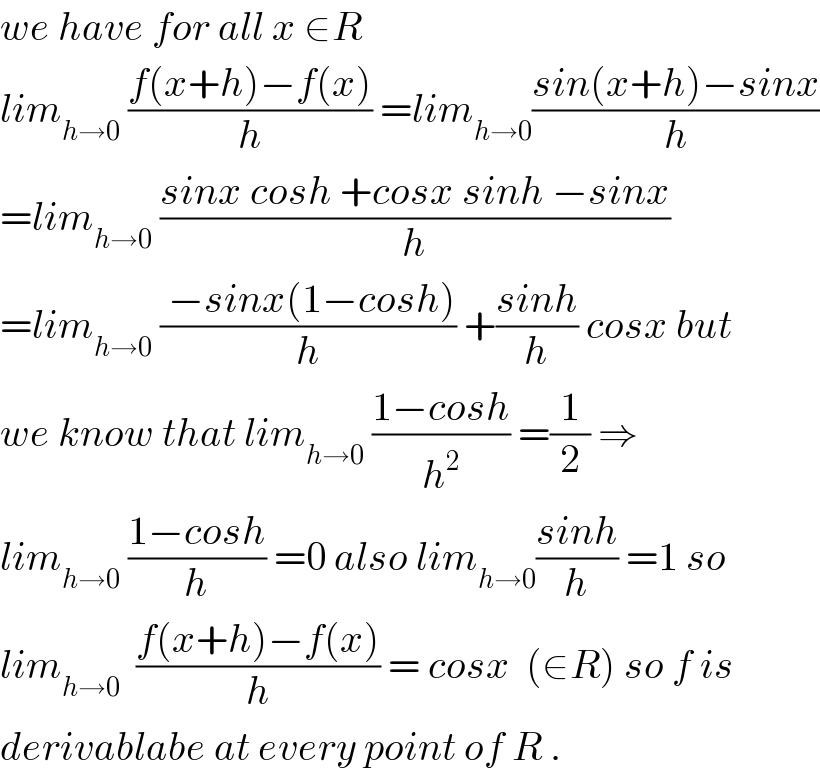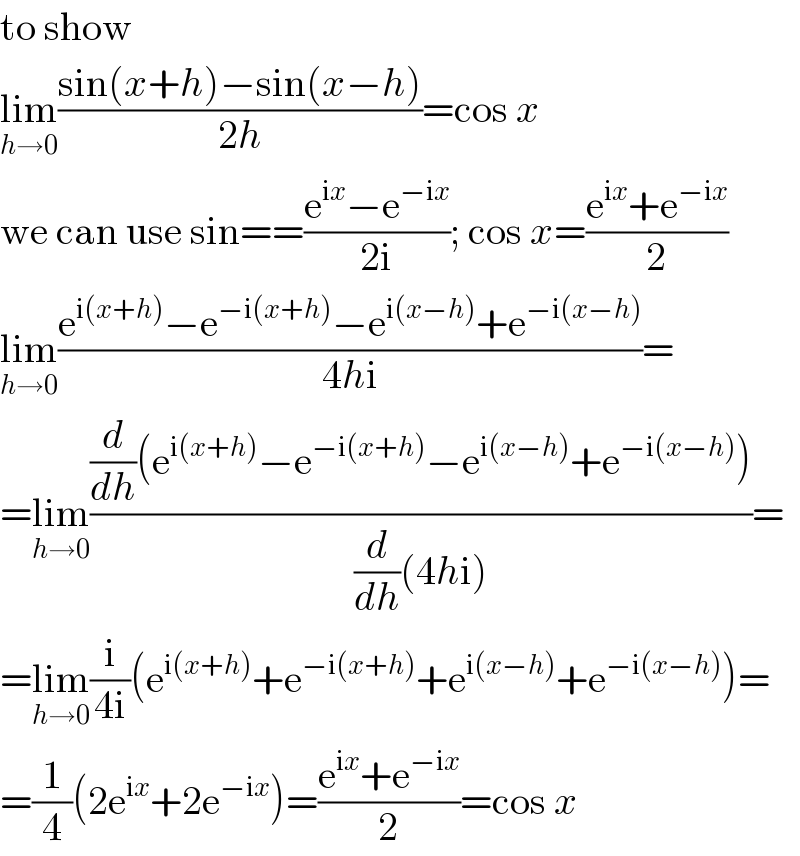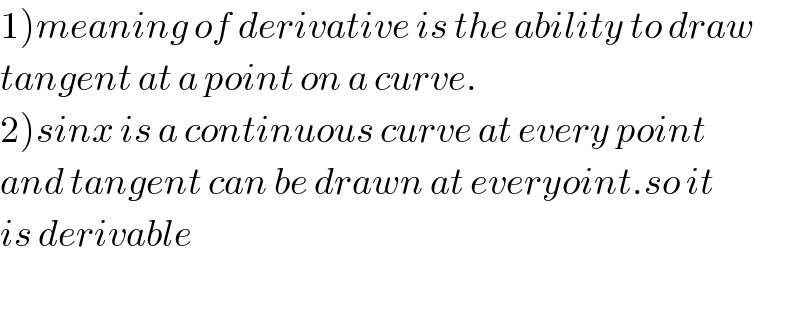
Question and Answers Forum
Question Number 36703 by saikiran last updated on 04/Jun/18

Commented by abdo mathsup 649 cc last updated on 04/Jun/18

Commented by MJS last updated on 04/Jun/18

Answered by tanmay.chaudhury50@gmail.com last updated on 04/Jun/18

Answered by MJS last updated on 04/Jun/18

